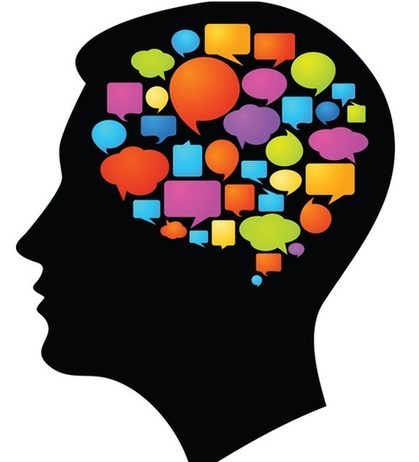
As every portrait painter knows, the slightest change in the shape of eyebrows, the curvature of lips or a crease in the forehead can alter the expression of a person's face — and affect how someone else responds.
Yale University neuroscientist Joy Hirsch said scientists would like to understand the neurocircuitry behind this interaction between individuals.
“The visual information and facial expressions are actually coded intimately with the systems of the brain that are coding the language processes," she said. "This is something that had not been really appreciated before.”
Hirsch and her colleagues at the Yale Brain Function Lab are looking into what actually happens in our brains when we engage in simple conversation.
Wearing skull caps with sensors that can register brain activity, researchers explain to each other pictures of simple objects.
“The new information here is that visual reports of, say, facial information are an intimate part of the language system as it is being used in an intimate situation,” Hirsch said.
Facing each other, then separated by a partition, the researchers describe simple pictures appearing on computer screens, such as a basket, a bowl of rice or a lighted cigarette.
A small laser in each of the 64 access points in the skull caps shines a light beam that penetrates about 2.5 centimeters into their brains. The reflected light changes depending on whether the blood vessels at that point are oxygenated or depleted of oxygen, showing the level of brain activity. A near-infrared spectroscopy (NIRS) machine records and displays the patterns of information flow.
“We want to take the physiologic information that we recorded on the NIRS machine ... and we want to know where is that information anatomically,” said Yale researcher Adam Noah.
In similar research, scientists at Princeton University are scanning the brains of people as they tell real-life stories and then playing back those stories to others.
“What we are asking you is whether the listener's brain becomes similar to the speaker brain [while] doing natural, real-life communication," said neuroscientist Uri Hasson.
Scientists say the findings may eventually help them better understand the patterns of neurocircuitry involved in communication and how they are different in people suffering from disorders such as autism or depression.
(来源:VOA 编辑:侯玮萍)
上一篇 : Robots Gaining Ground in Kitchens
下一篇 :
关注和订阅


电话:8610-84883645
传真:8610-84883500
Email: languagetips@chinadaily.com.cn